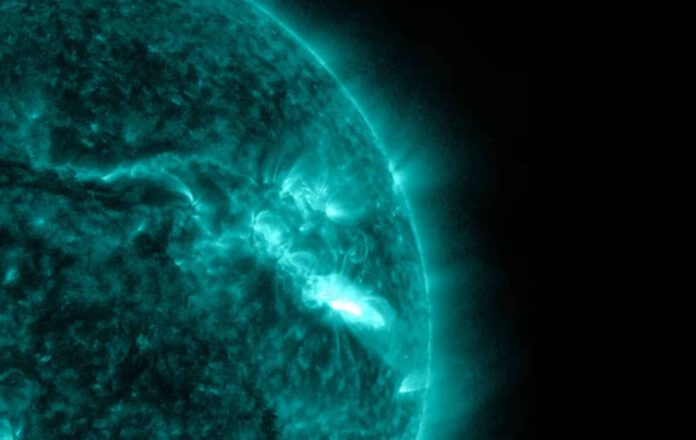
Unsettling Times Ahead Due to Powerful Solar Flare
Satellites have detected a massive solar flare, indicating possibly tumultuous conditions in the days to come. NASA’s Solar Dynamics Observatory (SDO), which has been observing and studying the sun since 2010, managed to capture the event on camera. According to researchers from the British Met Office, this is the most powerful eruption in the current solar cycle and the strongest since September 2017.
Understanding Solar Flares
A solar flare is, in essence, an explosion on the sun’s surface caused by the sudden release of energy stored in magnetic fields. This leads to radiation across the entire electromagnetic spectrum. The most recent flare detected was so powerful that researchers categorized it as an ‘X-Class.’ As a result, the flare caused a blackout of shortwave radio communications across North and South America. Radio operators may have noticed that radio signals at all frequencies below 30 MHz disappeared for more than 30 minutes.
The phenomenon was immortalized by NASA’s Solar Dynamics Observatory, with the flare showing as a bright flash in the middle of the image, moving towards the northwest edge.
Coronal Mass Ejections Alongside Monster Solar Flares
This monstrous solar flare was accompanied by two observed coronal mass ejections (CMEs) within the past 24 hours. During such eruptions, energy-rich particles and magnetic fields get hurled into space. The first CME originated from an explosion in the northern hemisphere of the sun, while the second stemmed from the powerful flare itself. According to the Met Office, the first explosion still requires further investigation due to a lack of sufficient imagery. However, the second ejection is currently propelling through space and is projected to reach Earth on the 17th of December.
Geomagnetic Storms: A Potentially Disruptive Aftermath
If CMEs reach Earth, they could trigger geomagnetic storms with the potential to disrupt electricity grids and other infrastructure. They can also intensify the Northern Lights (Aurora Borealis), making this awe-inspiring light show more intense and visible over larger areas. The Met Office predicts that the geomagnetic activity will initially be calm, but may become somewhat unsettled or active due to the influence of Coronal Holes anticipated on the 15th and 18th of December.
Increased Chances of Northern Lights
CMEs can also lead to spectacular displays of the Northern Lights. There’s a possibility that we may witness such phenomena this weekend, with the Met Office suggesting potential Aurora sightings in northern latitudes, including Scotland.
Solar Maximum and Unsettled Days Ahead
The occurrence of such a monstrous solar flare isn’t random. Every 11 years, our sun undergoes a cycle. Starting with a solar minimum where the sun remains mostly calm with few sunspots and solar flares. After this calm period, the sun enters a ‘solar maximum’ where activity heightens. We entered the 25th cycle in 2020 and our sun is expected to reach its zenith around 2025.
Prepare for More Solar Flares
As we approach the solar maximum, anticipate more ripples from our turbulent sun. Not all solar flares are dangerous, due to the protective magnetic field surrounding our planet. However, strong flares can cause issues, affecting radio communication, electricity grids, navigation systems, and posing risks for spacecraft and astronauts. NASA is closely monitoring space weather using various instruments, helping us rapidly detect extreme space weather. Given the current solar activity, brace yourself for a potential increase in solar flares.











